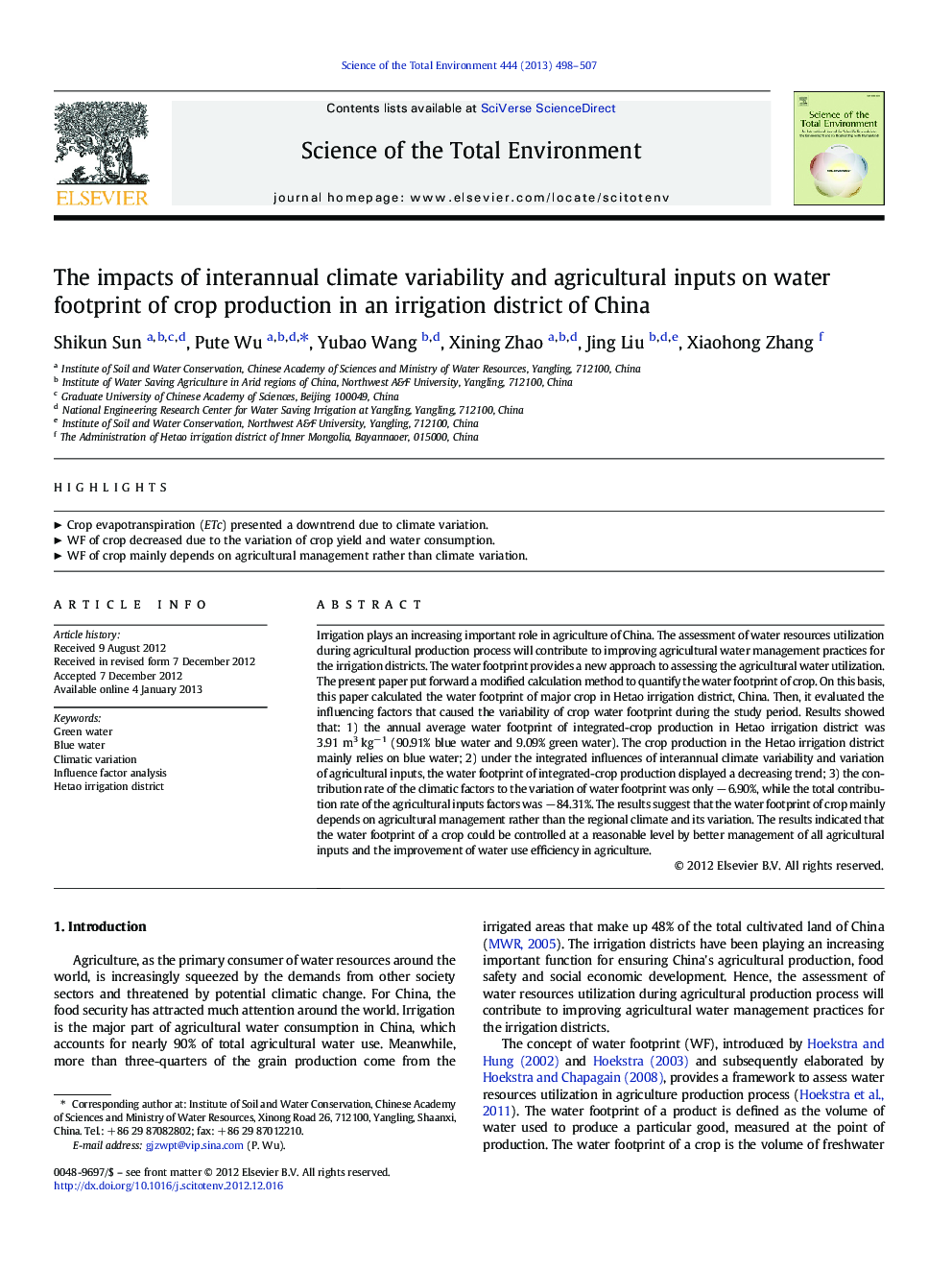| کد مقاله | کد نشریه | سال انتشار | مقاله انگلیسی | نسخه تمام متن |
|---|---|---|---|---|
| 4429089 | 1619809 | 2013 | 10 صفحه PDF | دانلود رایگان |

Irrigation plays an increasing important role in agriculture of China. The assessment of water resources utilization during agricultural production process will contribute to improving agricultural water management practices for the irrigation districts. The water footprint provides a new approach to assessing the agricultural water utilization. The present paper put forward a modified calculation method to quantify the water footprint of crop. On this basis, this paper calculated the water footprint of major crop in Hetao irrigation district, China. Then, it evaluated the influencing factors that caused the variability of crop water footprint during the study period. Results showed that: 1) the annual average water footprint of integrated-crop production in Hetao irrigation district was 3.91 m3 kg− 1 (90.91% blue water and 9.09% green water). The crop production in the Hetao irrigation district mainly relies on blue water; 2) under the integrated influences of interannual climate variability and variation of agricultural inputs, the water footprint of integrated-crop production displayed a decreasing trend; 3) the contribution rate of the climatic factors to the variation of water footprint was only − 6.90%, while the total contribution rate of the agricultural inputs factors was − 84.31%. The results suggest that the water footprint of crop mainly depends on agricultural management rather than the regional climate and its variation. The results indicated that the water footprint of a crop could be controlled at a reasonable level by better management of all agricultural inputs and the improvement of water use efficiency in agriculture.
► Crop evapotranspiration (ETc) presented a downtrend due to climate variation.
► WF of crop decreased due to the variation of crop yield and water consumption.
► WF of crop mainly depends on agricultural management rather than climate variation.
Journal: Science of The Total Environment - Volume 444, 1 February 2013, Pages 498–507